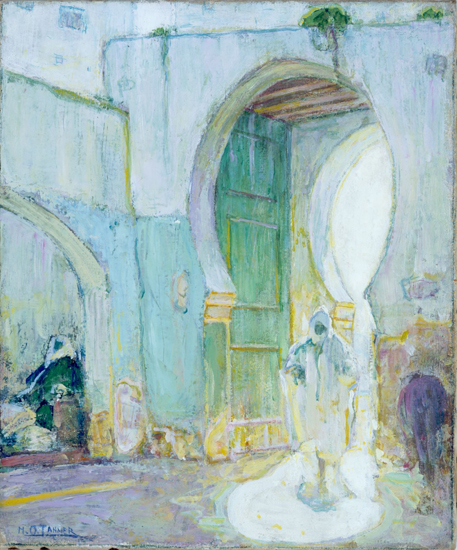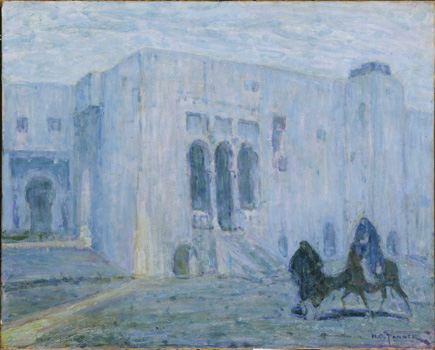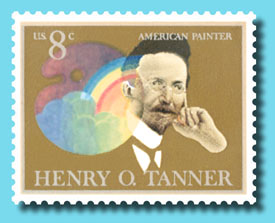HENRY O. TANNER
Click to enlarge AVAILABLE WORKS
Henry Ossawa Tanner (1859-1937) was one of the leading African American artists of the late nineteenth and early twentieth centuries. In recent years there has been a growing interest in Tanner and his paintings. His position in African American Art, long recognized by African Americans, is now to many American Art buffs a startling mid-twentieth century discovery.
Tanner's father was a bishop in the African Methodist Church in Philadelphia and like his wife supported young Tanner's art training. As a result of their interest, Tanner was able to study with the well-known Thomas Eakins at the Pennsylvania Academy of the Fine Arts. Even with these aids Tanner's career was never assured. He struggled for patrons, commissions, and teaching jobs, like other artists here in the United States with relatively little success and recognition. It was not until his studies in Paris and travels to North Africa that Tanner's waves were ever felt in this country. The moment of recognition came only briefly, when he won the coveted gold medal for the painting he submitted in the 1897 Paris Salon. The American art establishment remained hostile to Tanner even after this international victory.
This lack of recognition influenced Tanner's decision to never permanently return to the United States. In hopes of making a livelihood from his paintings, he continued to live and paint in Paris until his death in 1937.
Tanner's paintings are representative of the nineteenth century in both themes and techniques. Tanner's themes are for the most part largely religious in character. These were influenced by his upbringing in the church and his own spiritual beliefs. It is no doubt that Tanner was a very religious man and believed in the Biblical stories he depicted so admirably on his canvases. Tanner's point of departure from other American artists of his day was his understanding and use of Black subjects as principals in his paintings. He fervently believed that the Biblical myths could illustrate the struggles and hopes of Black Americans. From the standpoint of technique, one can see the influence of Eakins and the Impressionists in his earlier works, but as Tanner's more mature style develops we sense a spiritualism of Black feeling pervading his later Works.
Tanner’s art works are in major US and French museums, notably The Philadelphia Museum of Art, The Metropolitan Museum of Art, Pennsylvania Academy of the Fine Arts, The Burgess Fine Arts Collection and others.




